NEW YORK—The American chestnut was one of the most common hardwood-timber trees in eastern North America before the fungal disease, known as blight, devastated the species.
Between 1904 and 1950, about four billion trees were destroyed by blight. Now, these mighty American chestnuts will be making a comeback in Brooklyn—this time, as a special blight-resistant pure American hybrid.
Officials from The American Chestnut Foundation (TACF) gathered at Prospect Park with representatives from the Prospect Park Alliance, the Brooklyn Botanic Garden, and the city’s Greenbelt Native Plant Center for the presentation ceremony of 10 blight-resistant American chestnut seeds from TACF on Thursday.
“Today we have the opportunity to bring something back, with the hopes that we can bring the mighty giant American chestnuts back to be a part of our everyday life,” said TACF President and CEO Bryan Burhans, who commented on the historical significance of the occasion.
TACF’s efforts to create a blight-resistant strain of the American chestnut are rooted in science. “We use biotechnology and the traditional backcross breeding techniques,” Burhans noted.
The seeds, produced by nearly 30 years of backcross breeding, still require testing and evaluation. “We know we have inherited resistance from their Chinese parents. We are trying to find out now: Do they have enough resistance to make it against all these hardwoods that grow in the United States?” Burhans explained.
Edward Toth, director of the Greenbelt Native Plant Center at the Department of Parks and Recreation, stated that his staff members are “specialists in taking seeds like these and growing them to a size where they will survive planted out in the wild.”
The seeds will be tended with care for a couple of years, until the saplings are young and healthy, said Toth. Then, they will be handed over to the park and the botanical garden for final planting in the ground.
Uli Lorimer, curator of the Native Flora Garden at the Brooklyn Botanical Garden, explained the garden’s participation in the effort: “Our role in the garden will be to receive several of these trees … and then to plant them out into our Native Flora Garden.” She added that the botanical garden will collect data and monitor the trees over the coming years and decades, to determine whether they are resistant and whether they are growing well.
The blight disease originated from Asia and China. The Chinese chestnuts had a natural resistance to the infection, but their American counterparts were vulnerable and often perished from the disease when it first spread to the United States during the early 20th century.
Early endeavors to produce a resistant strain by crossing American chestnuts with Chinese trees were unsuccessful. TACF’s work built upon the early breeding efforts and then back-crossed the American Chestnuts with the hybrids. Six generations of these crosses had to be carried out.
“Each cross takes about 10 to 15 years for the tree to get mature enough in order to bear seeds. Now we have a hybrid seed that is 94-percent American chestnut and 6-percent Chinese chestnut, and hopefully we have conferred the resistance portion of the Chinese genome into the American trees,” Lorimer said.
Once the saplings of the blight-resistant strain are ready, they will be planted and put in direct competition with other hardwoods at the Brooklyn Botanic Garden and also alongside the unprotected American chestnuts in Prospect Park.
Back in 2004, Bart Chezar, 64, retired engineer and Prospect Park volunteer, participated in planting some purebred unprotected American chestnut trees. Eight have survived, but they will eventually succumb to the deadly blight disease, Chezar said.
Some of the blight-resistant trees will be given the right site, the right soil, fertilizer, and lots of loving care. Others will be set up on their own, left to nature, to see if they can make it without the additional help and to test if they will be vigorous enough to show resistance, Lorimer noted.
Between 1904 and 1950, about four billion trees were destroyed by blight. Now, these mighty American chestnuts will be making a comeback in Brooklyn—this time, as a special blight-resistant pure American hybrid.
Officials from The American Chestnut Foundation (TACF) gathered at Prospect Park with representatives from the Prospect Park Alliance, the Brooklyn Botanic Garden, and the city’s Greenbelt Native Plant Center for the presentation ceremony of 10 blight-resistant American chestnut seeds from TACF on Thursday.
“Today we have the opportunity to bring something back, with the hopes that we can bring the mighty giant American chestnuts back to be a part of our everyday life,” said TACF President and CEO Bryan Burhans, who commented on the historical significance of the occasion.
TACF’s efforts to create a blight-resistant strain of the American chestnut are rooted in science. “We use biotechnology and the traditional backcross breeding techniques,” Burhans noted.
The seeds, produced by nearly 30 years of backcross breeding, still require testing and evaluation. “We know we have inherited resistance from their Chinese parents. We are trying to find out now: Do they have enough resistance to make it against all these hardwoods that grow in the United States?” Burhans explained.
Edward Toth, director of the Greenbelt Native Plant Center at the Department of Parks and Recreation, stated that his staff members are “specialists in taking seeds like these and growing them to a size where they will survive planted out in the wild.”
The seeds will be tended with care for a couple of years, until the saplings are young and healthy, said Toth. Then, they will be handed over to the park and the botanical garden for final planting in the ground.
Uli Lorimer, curator of the Native Flora Garden at the Brooklyn Botanical Garden, explained the garden’s participation in the effort: “Our role in the garden will be to receive several of these trees … and then to plant them out into our Native Flora Garden.” She added that the botanical garden will collect data and monitor the trees over the coming years and decades, to determine whether they are resistant and whether they are growing well.
The blight disease originated from Asia and China. The Chinese chestnuts had a natural resistance to the infection, but their American counterparts were vulnerable and often perished from the disease when it first spread to the United States during the early 20th century.
Early endeavors to produce a resistant strain by crossing American chestnuts with Chinese trees were unsuccessful. TACF’s work built upon the early breeding efforts and then back-crossed the American Chestnuts with the hybrids. Six generations of these crosses had to be carried out.
“Each cross takes about 10 to 15 years for the tree to get mature enough in order to bear seeds. Now we have a hybrid seed that is 94-percent American chestnut and 6-percent Chinese chestnut, and hopefully we have conferred the resistance portion of the Chinese genome into the American trees,” Lorimer said.
Once the saplings of the blight-resistant strain are ready, they will be planted and put in direct competition with other hardwoods at the Brooklyn Botanic Garden and also alongside the unprotected American chestnuts in Prospect Park.
Back in 2004, Bart Chezar, 64, retired engineer and Prospect Park volunteer, participated in planting some purebred unprotected American chestnut trees. Eight have survived, but they will eventually succumb to the deadly blight disease, Chezar said.
Some of the blight-resistant trees will be given the right site, the right soil, fertilizer, and lots of loving care. Others will be set up on their own, left to nature, to see if they can make it without the additional help and to test if they will be vigorous enough to show resistance, Lorimer noted.
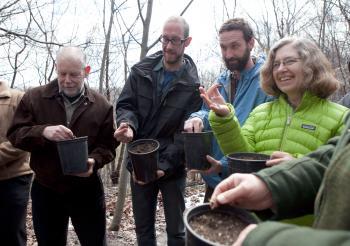
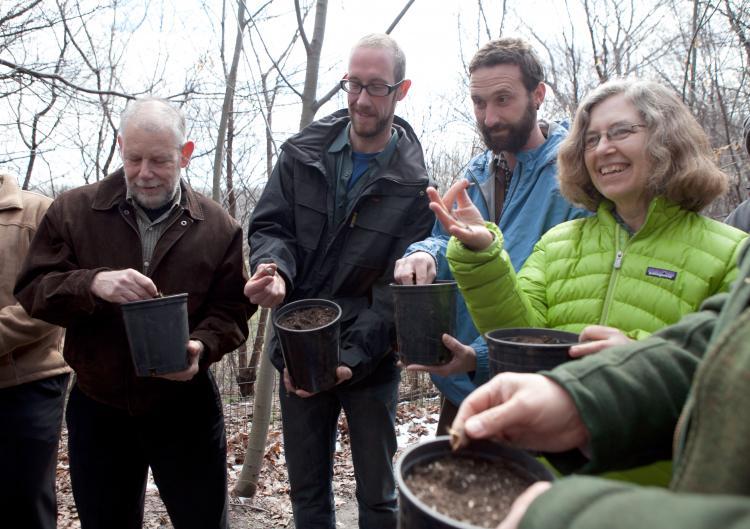


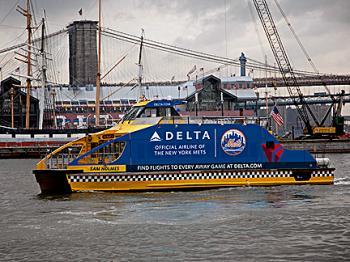
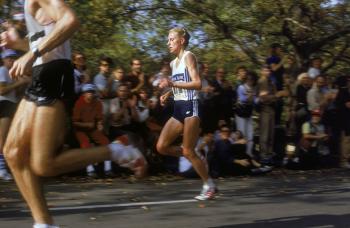
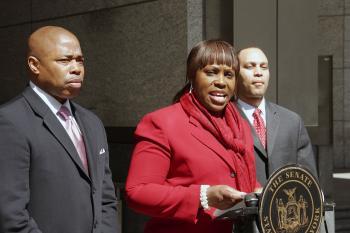
Friends Read Free